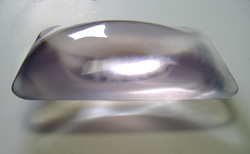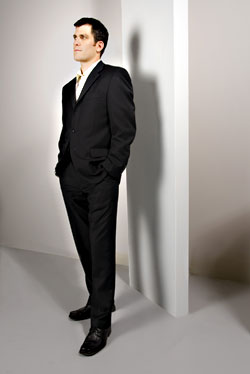You’d be hard-pressed to find anyone complaining about the Seattle Art Museum’s sparkling new expansion. At REI’s anniversary sale—which started the same weekend the museum opened, and was just as packed—I overheard three separate, and happy, conversations pivoting around the subject of SAM. Even the local journalists seem pleased. Sure, there are the usual naysayers who would even be able to find something wrong with last week’s 70-degree weather. But most of us are singing SAM’s praises.
And me, too. I love the expansion. I love the sculpture park. At the moment, I even love the Asian Art Museum. I love everything SAM.
But I don’t love it because I think the new building is perfect or because all the recent acquisitions are top-notch. I can happily play along with the most pessimistic Seattleite out there. What I love is that, just as SAM integrated art into the city so seamlessly with the sculpture park, so too does the museum fit effortlessly into our city life. You can be grabbing coffee at your local haunt on Union and see Bruce Nauman’s neon glowing in SAM’s window across the street. You can turn down University and get a glimpse of Cai Guo-Qiang’s Fords exploding. In other words, even though the building itself doesn’t make much of a statement on its own, SAM has created a downtown art experience in which the museum mingles and moves within our fair city. It’s not contained in a separate white cube.
More brilliantly, the interior spaces of SAM serve as a microcosm of this bigger, full-city phenomenon. The galleries themselves mimic what has happened on our streets; art from different genres and disciplines leak into one another, creating new and exciting relationships between ostensibly unrelated art objects.
The architect, Brad Cloepfil, helped make this happen by shaping the vertical skyscraper into a never-ending land of transitions, with unfolding staircases leading from one gallery to the next. Which means that nowhere in the museum’s expansion is art left to dead-end. From the room entirely devoted to the contemporary German painting legend Gerhard Richter, you can just as easily breeze by a Ruby Sterling video as you might buy something right next door in the über-modernist bookstore.
Or, take the transition from the third floor to the fourth. As you ride the escalator up, William Kentridge’s memorable Shadow Procession plays to your left, addressing the complicated history of South Africa. This contemporary introduction to a floor whose main space is dedicated to African art is perfect. In fact, it makes the ceremonial art that much more relevant.
This was clearly a priority for African art curator Pam McClusky, who has made a point of placing ceremonial art into a contemporary and Western context. After the Kentridge video, the first thing to greet us on the fourth floor is a group of cloth mannequins—complete with Adidas and Nike clothing in addition to their ceremonial wares—sitting casually on the floor. Videos above their heads show men and women—also in contemporary street clothes—from a village in Nigeria performing the dance rituals.
The move from the Kentridge video to the human-scale dance diorama prepares us for increasingly bizarre but also elegant journeys to other art spaces on the same floor. Because our normal museum-going expectations have already been ruptured, the move—from the African collection to stunning rooms of glass, mirrors, and porcelain—works.
One of my favorite nooks is the circa-1600 room, a replica of what is purported to be an Italian apothecary. Measuring more than 16 feet long, the space also houses the museum’s 16th-century collection of Italian ceramic ware, but it’s not the art that’s worth your time. It’s the room itself—emitting the lovely smell of aged wood the way only old European houses can, and falsely lit so that you feel like sun is streaming through the old glass windows—that creates a sense of place.
Leaving there, you come upon a tiny, wooden Mercedes-Benz parked nearby. Finding the car is like unveiling another hidden treasure. Knowing the history of the work makes the experience even more like an expedition into the unknown: It’s a coffin. In keeping with Ghanaian tradition, in which death is viewed not as a termination of life but as a transition to an otherworldly realm, the artist, Kane Quaye, carves vehicles (not always cars) to aid in the passage. Each is designed specifically to capture the spirit of the departed—be it a character trait or a symbol.
In all, the same can be said of SAM’s new space—not that it’s dead, but that finally we have a museum that suits our character. Curators have been given the right spaces to foster smart visual relationships and make transitions from one visual world to the next. And we’ve been given a space that lets us explore those worlds without making us commit to one genre or another . In a world of DJ sampling and channel surfing, the new museum feels just right.








